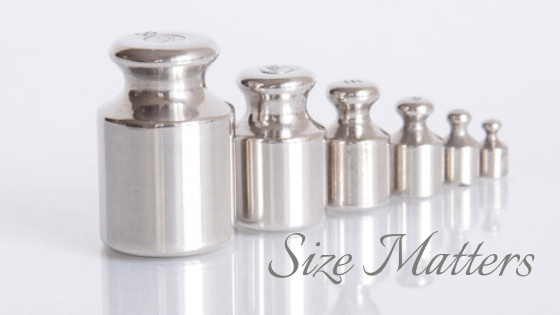Size Matters! (Especially when it comes to investing.)

Large, Mid, Small…
Are we still talking about investments? As if investment terms weren’t seemingly complicated enough, we throw in terms like: large-cap, mid-cap and small-cap. You may even hear micro-cap and nano-cap sprinkled in there. Really though, these terms are simply referring to the size of a company. A large-cap company has a value of more than $10 billion, a small-cap company less than $2 billion, and a mid-cap company falls somewhere in-between.
What does that mean to you as an investor? Well, the size of the company can relate directly to the risks and rewards. Here’s an analogy I like to use. Take a company like Nike, who started out as a sneaker company but today is incredibly diversified offering not only sneakers but apparel, sports gear and even golf clubs! Not only have they built their own brand but they are also the parent company of Converse and Hurley.
Let’s say Nike brings a new sneaker design to market and it fails, as an investor, do you think you would be at risk for losing a substantial amount of value based on that sneaker alone? Probably not, since the company has so many other products. One failed product will only have a minimal affect. At the same time, if that new sneaker design is wildly successful it will add to the bottom line but you probably won’t see a huge jump in stock price.
On the flip side let’s look at a small shoe company like Crocs, Inc. They started out with one new innovative design. You know those waterproof plastic looking clogs? (Think Mario Batali’s bright orange clogs.) Crocs is predominately a shoe company. They don’t have a diversified line of products or brands. If they bring a new shoe design to market and it fails, the impact of that failed product has a much larger impact on their bottom line. Yet at the same time as Crocs continues to evolve and develop new designs and products the success of those ventures will have a much more positive impact which could really make the value of their stock jump.
As you can see a much larger, more diversified company is going to be able to absorb losses easier and although you may not experience significant jumps in stock value you will likely experience less volatility. As an added bonus, since large-cap companies are usually in a position to retain some of its earnings they are likely to pay dividends. Small-cap companies are attractive for growth potential, yet certainly carry risks and can be quite volatile.
Disclosure: I am in no way affiliated with either Nike or Crocs. Although our family has purchased both Nike and Croc products, the use of these companies is for illustrative purposes only. By no means, am I making any recommendation or advising the purchase or sale of either company. Before making any investment, carefully consider the investment objectives, risks, charges, and expenses.





